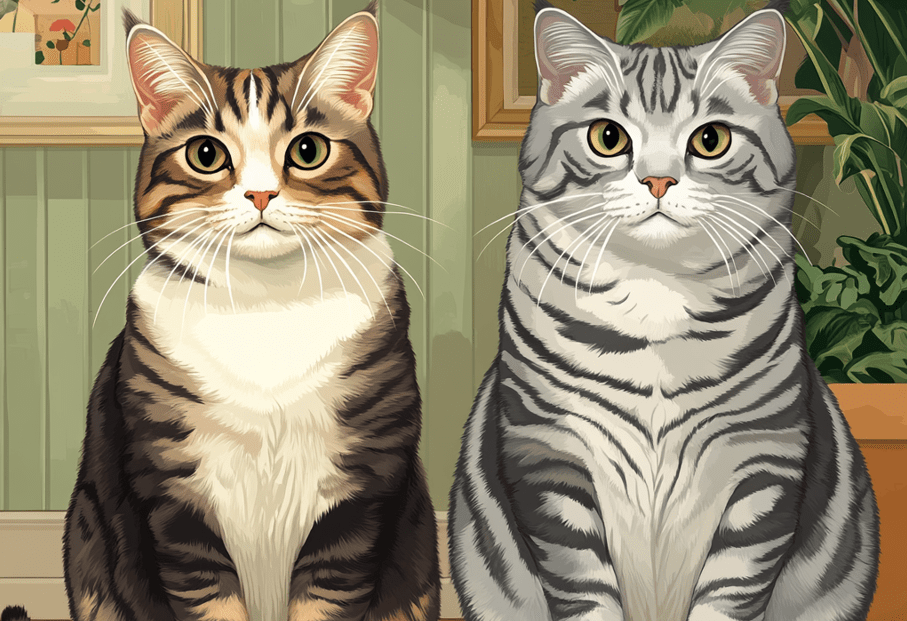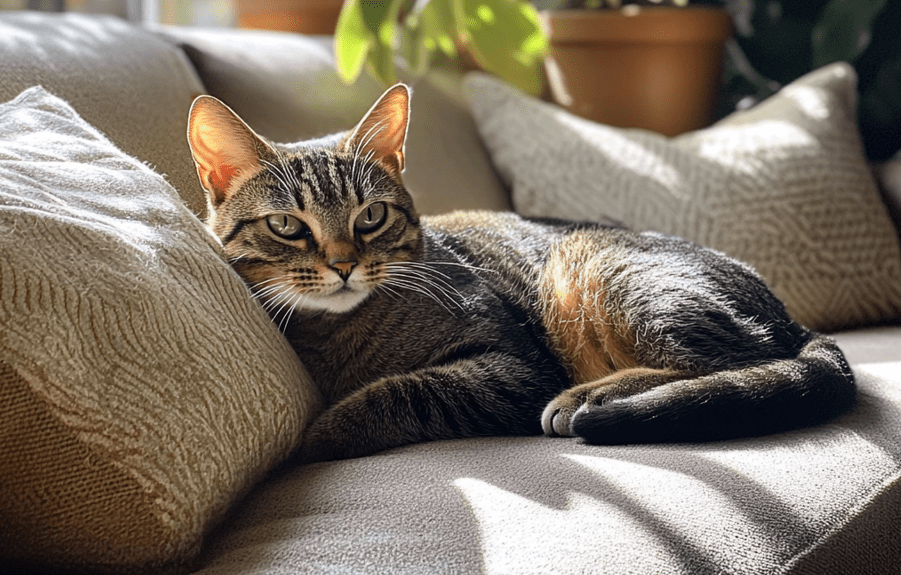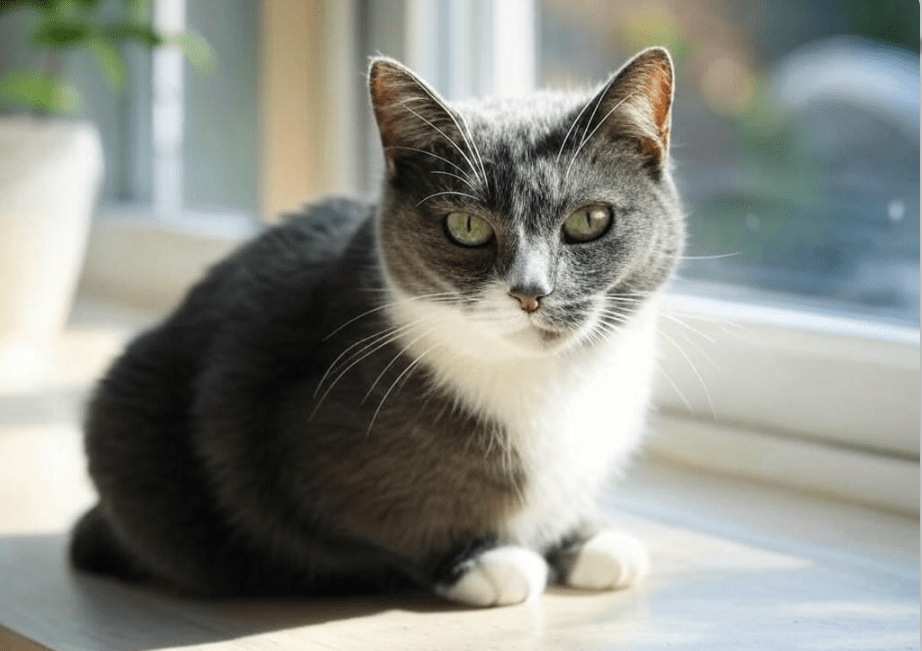
Vet visits can be stressful for any cat, but for a nervous Domestic Shorthair, the experience can feel overwhelming. Known for their diverse personalities and sleek, short coats, Domestic Shorthairs are beloved pets, yet many exhibit anxiety during veterinary trips. Similar to the British Shorthair Cat, known for its calm demeanor, Domestic Shorthairs can benefit from tailored strategies to ease their nerves. This comprehensive guide explores practical, empathetic, and effective ways to calm your nervous Domestic Shorthair, ensuring vet visits are less daunting for both you and your feline friend.
Understanding Why Domestic Shorthairs Get Nervous
Domestic Shorthairs, like all cats, are creatures of habit. Their sensitivity to change—whether it’s a new environment, unfamiliar smells, or strange people—can trigger anxiety. Vet clinics, with their clinical scents, loud noises, and probing examinations, are a perfect storm for feline stress. Understanding the root causes of your cat’s nervousness is the first step toward helping them feel secure.
Common Triggers for Nervousness
Unfamiliar Environments: The vet’s office is a stark contrast to your cat’s cozy home.
Car Rides: The motion, sounds, and confinement of a car trip can be unsettling.
Handling by Strangers: Vet staff, while trained, are unfamiliar to your cat, causing unease.
Past Experiences: A previous negative vet visit can create lasting anxiety.
Sensory Overload: Bright lights, barking dogs, and antiseptic smells can overwhelm a cat’s senses.
By recognizing these triggers, you can take proactive steps to mitigate stress and create a calmer experience for your Domestic Shorthair.
Preparing Your Domestic Shorthair for a Vet Visit
Preparation is key to reducing anxiety. By familiarizing your cat with elements of the vet visit ahead of time, you can desensitize them to potential stressors.
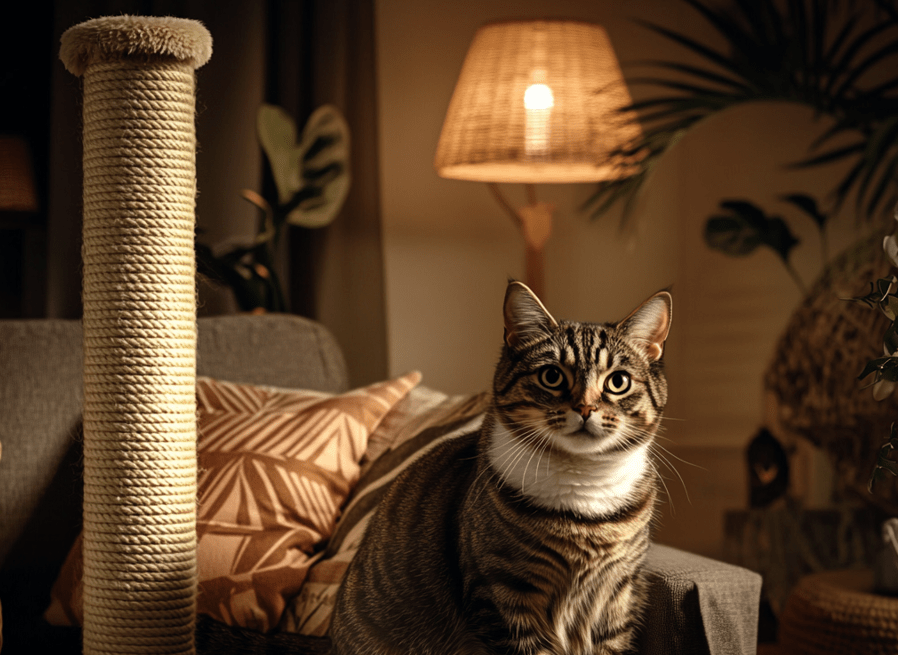
1. Choose the Right Carrier
A comfortable, secure carrier is essential. Opt for a hard-sided carrier with a removable top, which allows the vet to examine your cat without fully removing them, reducing stress. Here’s how to make the carrier a safe space:
Leave It Out: Place the carrier in your home weeks before the visit. Add soft bedding and treats to create positive associations.
Practice Runs: Place your cat in the carrier for short periods, rewarding them with treats or praise.
Scent Familiarity: Spray the carrier with a feline pheromone product like Feliway to promote calmness.
2. Acclimate Your Cat to Car Rides
Car trips are often a major source of stress. Gradually introduce your Domestic Shorthair to the car:
Start Small: Place your cat in the carrier inside a stationary car, offering treats.
Short Drives: Take brief drives around the block, gradually increasing duration.
Secure the Carrier: Use a seatbelt to stabilize the carrier, preventing it from sliding.
3. Simulate Vet Handling at Home
Desensitizing your cat to being touched can make the vet’s examination less intimidating:
Gentle Touch: Regularly touch your cat’s paws, ears, and mouth, mimicking a vet’s exam. Pair with treats to build positive associations.
Lifting Practice: Lift your cat gently, holding them securely, to mimic being placed on a vet’s table.
Reward Calm Behavior: Always reward your cat for staying relaxed during these sessions.
4. Schedule Strategically
Timing can impact your cat’s stress levels:
Choose Quiet Times: Book appointments during less busy hours, such as early mornings, to minimize exposure to other animals.
Avoid Delays: Confirm the vet’s schedule to reduce waiting time in the clinic.
At-Home Calming Techniques Before the Visit
Creating a calm state of mind before leaving home sets the tone for the vet visit. These techniques can help soothe your Domestic Shorthair’s nerves.
1. Use Feline Pheromones
Pheromone diffusers, sprays, or collars (e.g., Feliway) mimic the calming scents a mother cat produces. Use them in the carrier, car, and even at home a few days before the visit to create a soothing environment.
2. Play Calming Music
Music designed for cats, with soft, low-frequency sounds, can reduce stress. Play it at home and during the car ride to maintain a tranquil atmosphere.
3. Offer a Light Meal
Feed your cat a small meal a few hours before the visit to prevent nausea during the car ride, but avoid overfeeding, which can cause discomfort.
4. Try Calming Treats or Supplements
Consult your vet about calming treats or supplements containing ingredients like L-theanine, chamomile, or tryptophan. Administer these as directed, typically 30–60 minutes before the visit.
5. Create a Comforting Routine
Maintain your cat’s regular routine as much as possible on the day of the visit. Familiar activities, like playtime or brushing, can help them feel secure.
During the Vet Visit: Keeping Your Domestic Shorthair Calm
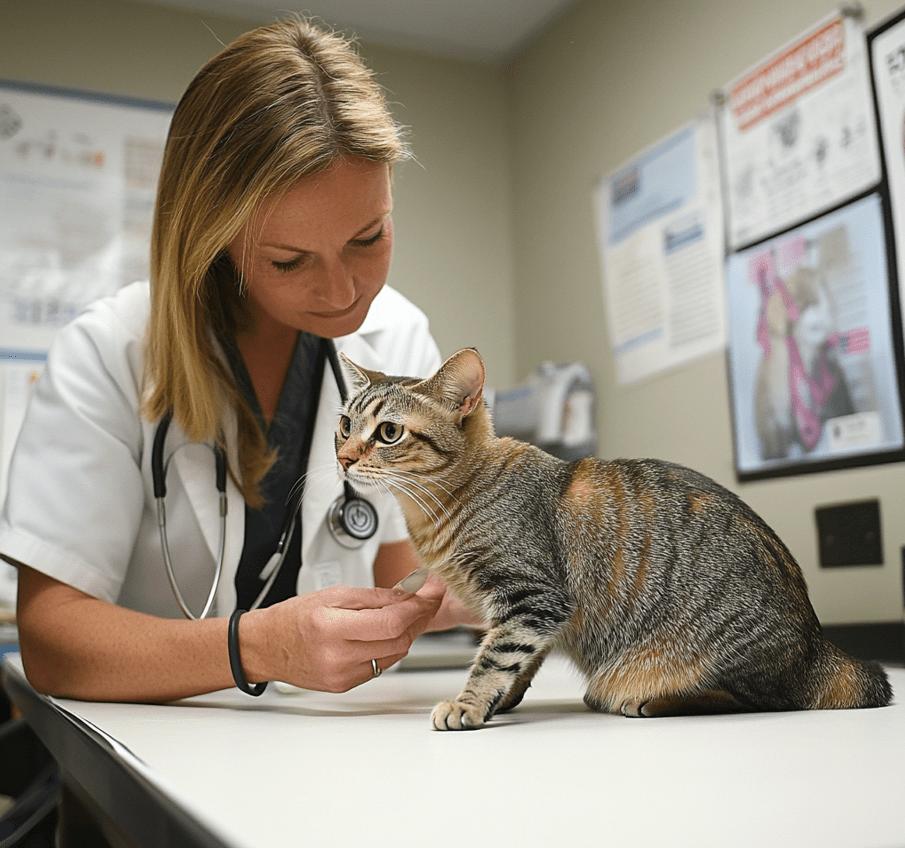
Once at the vet, your role is to advocate for your cat and create a sense of safety. These strategies can help maintain calmness during the appointment.
1. Stay Calm Yourself
Cats are highly perceptive and can pick up on your emotions. Speak in a soothing tone, move slowly, and avoid showing frustration or anxiety.
2. Use Familiar Items
Bring a blanket or toy with your cat’s scent to place in the carrier or on the exam table. Familiar smells can provide comfort in an unfamiliar setting.
3. Request a Quiet Exam Room
Ask the vet staff if you can wait in a quiet room rather than a busy waiting area. Some clinics offer feline-only spaces to reduce stress.
4. Advocate for Gentle Handling
Communicate your cat’s needs to the vet:
Request Slow Movements: Ask the vet to approach your cat slowly and avoid sudden movements.
Minimize Restraint: If possible, allow your cat to stay in the carrier’s bottom half during the exam.
Pause if Needed: If your cat becomes overwhelmed, request a brief pause to let them settle.
5. Use Distractions
Offer treats or a favorite toy during the exam to divert your cat’s attention. Some cats respond well to being gently stroked or spoken to in a soft voice.
Post-Visit Care: Helping Your Cat Recover
The vet visit doesn’t end when you leave the clinic. Helping your Domestic Shorthair decompress is crucial for their emotional well-being and future vet visits.
1. Create a Quiet Space at Home
Set up a calm, comfortable area where your cat can relax. Include their favorite bed, toys, and water. Avoid loud noises or sudden disruptions.
2. Monitor Behavior
Watch for signs of lingering stress, such as hiding, reduced appetite, or excessive grooming. If these persist beyond a day or two, consult your vet.
3. Reinforce Positive Associations
After the visit, reward your cat with treats, playtime, or affection to reinforce that vet trips lead to positive outcomes.
4. Reflect on the Experience
Note what worked and what didn’t during the visit. Did the pheromone spray help? Was the carrier comfortable? Use these insights to refine your approach for next time.
When to Seek Professional Help
If your Domestic Shorthair’s anxiety seems unmanageable, consult your veterinarian or a feline behaviorist. They may recommend:
Prescription Medications: Anti-anxiety medications, like gabapentin, can be given before vet visits to reduce stress. Always follow your vet’s guidance.
Behavioral Therapy: A behaviorist can develop a tailored desensitization plan for severe anxiety.
Alternative Vet Options: Some vets offer house calls or telemedicine, which may be less stressful for your cat.
Additional Tips for Long-Term Success
Building a stress-free vet experience is an ongoing process. These long-term strategies can help your Domestic Shorthair become more resilient over time.
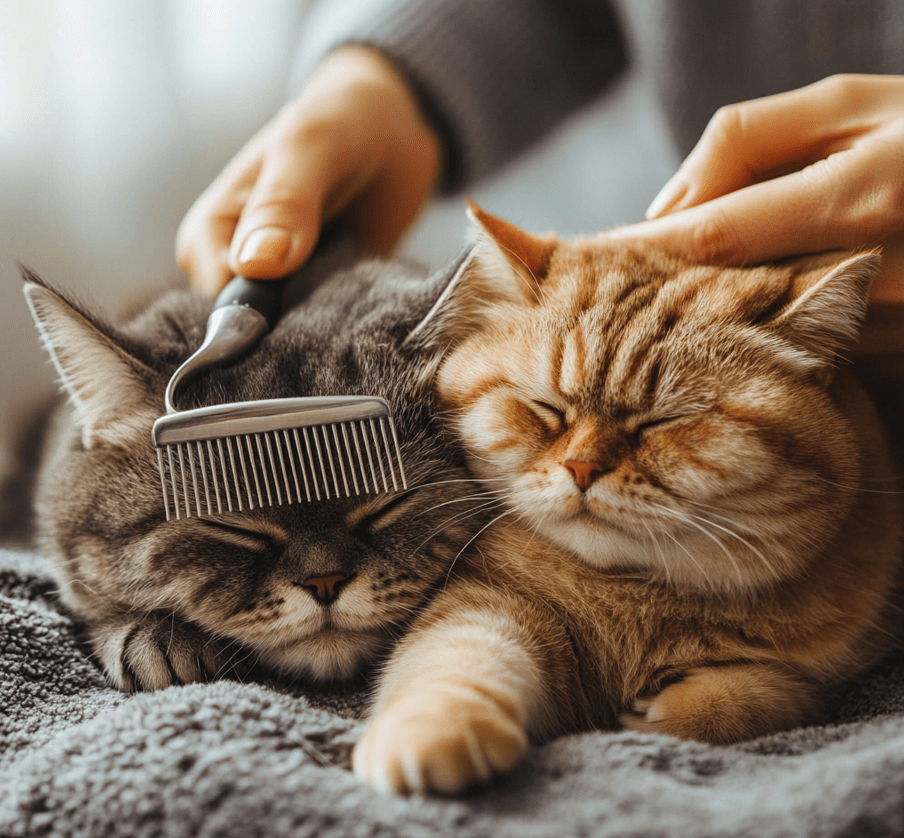
1. Regular Vet Checkups
Frequent, low-stakes visits (e.g., for weight checks) can familiarize your cat with the clinic, reducing anxiety over time.
2. Positive Reinforcement Training
Train your cat to associate vet-related activities (like entering the carrier) with rewards. Use clicker training or treats to reinforce calm behavior.
3. Socialization
Expose your Domestic Shorthair to new people and environments early in life to build confidence. For older cats, gradual exposure can still help.
4. Maintain Overall Health
A healthy cat is less likely to be stressed. Ensure your Domestic Shorthair has a balanced diet, regular exercise, and mental stimulation to support their emotional well-being.
Conclusion
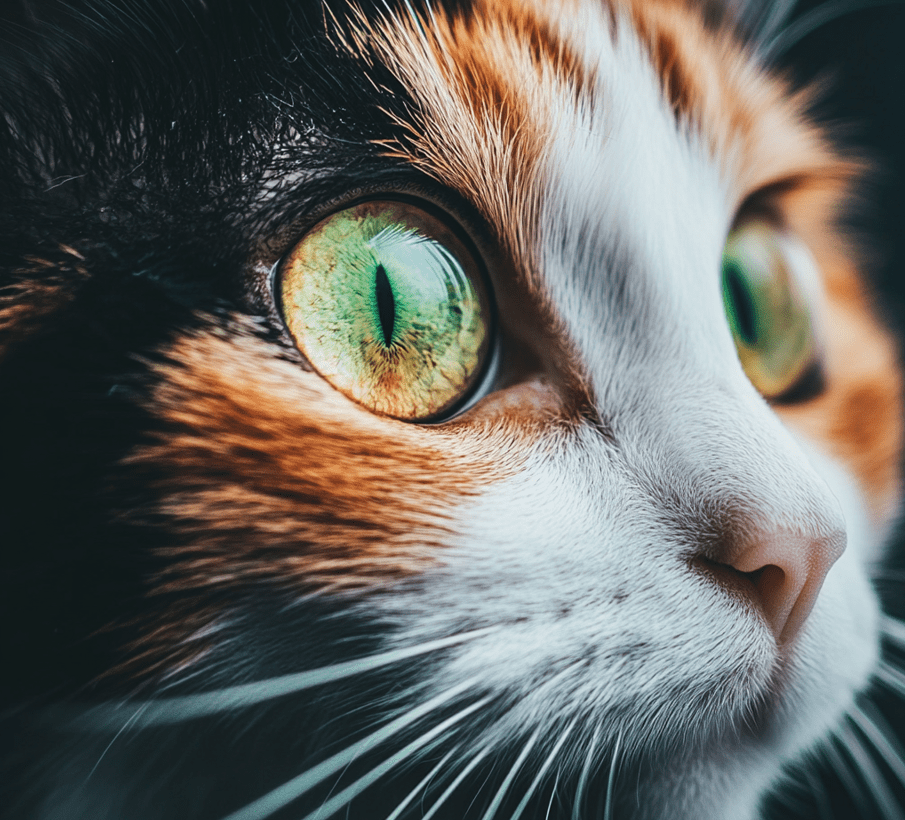
Calming a nervous Domestic Shorthair during vet visits requires patience, preparation, and empathy. By understanding your cat’s triggers, preparing them for the experience, and using calming techniques, you can transform vet trips from stressful ordeals into manageable events. From choosing the right carrier to advocating for gentle handling, every step you take helps your feline friend feel safer and more secure. With consistent effort, you can build a positive vet experience that benefits both your Domestic Shorthair’s health and your peace of mind.
For more personalized advice, consult your veterinarian or a feline behaviorist. With the right approach, you can ensure your Domestic Shorthair thrives, even in the face of a vet visit.

